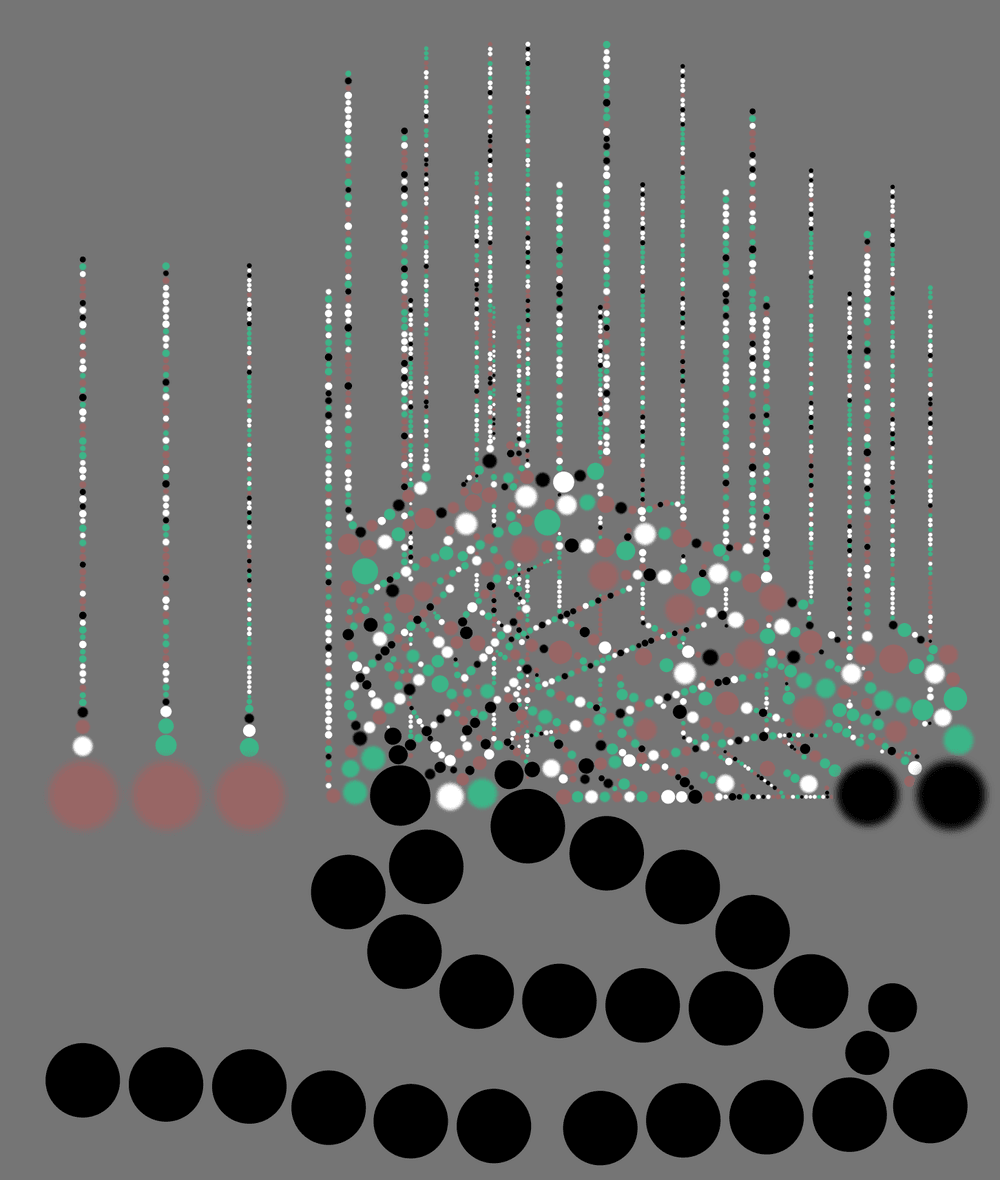

Composition #92 (Digital) is a series of 250 generative digital drawings, based on software written by Marcel Schwittlick and built on a base of millions of recorded mouse movements that Schwittlick has compiled over time.
The database of recorded mouse movements constitutes an extensive digital library of at-first-glance random scribbles. Are these drawings really random? What is randomness? John Cage said: “the first question I ask myself when something doesn't seem to be beautiful is ‘why do I think it is not beautiful?’ and very shortly you discover there's no reason. If we can conquer that dislike or begin to like what we did dislike, then the world is more open.” Can one say the drawings derived from mouse movements are random? They might appear soulless, perhaps, but are they, really?
In the wake of other conceptual artists, systems artists and generative artists, like them, Schwittlick chose to refuse Romanticism and its influence, deploying strategies to avoid the human hand and all the mystique and sentimentality that pervasively come along with it. That’s why he uses code, computers, plotters and other paraphernalia. However, paradoxically, one of his most recurrent sources of entropy are his 10 years-long recorded computer mouse movements. In order to create the marks and lines of the lumonigrams, he used this specific corpus, employing a pseudo-random, or, better said, meta-random selection which isn’t done by Schwittlick himself but by his custom software system.
Composition #92 (Digital) - 3

- 價格美元價格數量到期日從
- 價格美元價格數量底價差額到期日從
Composition #92 (Digital) is a series of 250 generative digital drawings, based on software written by Marcel Schwittlick and built on a base of millions of recorded mouse movements that Schwittlick has compiled over time.
The database of recorded mouse movements constitutes an extensive digital library of at-first-glance random scribbles. Are these drawings really random? What is randomness? John Cage said: “the first question I ask myself when something doesn't seem to be beautiful is ‘why do I think it is not beautiful?’ and very shortly you discover there's no reason. If we can conquer that dislike or begin to like what we did dislike, then the world is more open.” Can one say the drawings derived from mouse movements are random? They might appear soulless, perhaps, but are they, really?
In the wake of other conceptual artists, systems artists and generative artists, like them, Schwittlick chose to refuse Romanticism and its influence, deploying strategies to avoid the human hand and all the mystique and sentimentality that pervasively come along with it. That’s why he uses code, computers, plotters and other paraphernalia. However, paradoxically, one of his most recurrent sources of entropy are his 10 years-long recorded computer mouse movements. In order to create the marks and lines of the lumonigrams, he used this specific corpus, employing a pseudo-random, or, better said, meta-random selection which isn’t done by Schwittlick himself but by his custom software system.